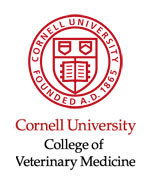AHEAD initiative in the
Kavango-Zambezi (KAZA) Transfrontier Conservation Area (TFCA)
AHEAD (Animal & Human Health for the Environment And Development)
is focused on problems facing biodiversity conservation and development
in large, transboundary landscapes from the critically important
perspective of the linkages among wildlife health, domestic animal
health, and human health and livelihoods. The area of focus is
one of southern Africa’s major transfrontier conservation
areas – the Kavango-Zambezi Transfrontier Conservation
Area (KAZA TFCA), at the verge of becoming perhaps the world’s
largest conservation-oriented landscape. The development of TFCAs
to further the conservation of biodiversity and sustainable development
through the harmonization of transboundary natural resource management
is a priority for SADC (the Southern African Development Community)
and the five countries that encompass the KAZA TFCA: Angola,
Botswana, Namibia, Zambia and Zimbabwe. The importance of this
TFCA to the region was evidenced by the signing of an international
MoU to establish the KAZA TFCA by the five nations in 2006. Agreement
has been reached on creating a transfrontier area spanning approximately
400,000 km² (more than 1.5 times the size of Great Britain)
and encompassing more than 60 national parks, game reserves,
community conservancies and game management areas. The area will
include, for example, the Caprivi Strip, Chobe National Park,
the Okavango Delta (the largest Ramsar site in the world) and
the Victoria Falls (World Heritage Site).
The KAZA TFCA also contains the largest contiguous population
of elephants (approximately 250,000) on the continent. A key
economic driver behind TFCAs like KAZA is nature-based tourism
that seeks to maximize returns from marginal lands in a sector
where southern Africa enjoys a global comparative advantage.
Nature-based tourism (photographic, trophy hunting, etc.) now
contributes about as much to the gross domestic product of southern
Africa as agriculture, forestry, and fisheries combined – a
remarkable and relatively recent development. However,
the management of wildlife and livestock diseases (including
zoonoses – diseases
transmissible between animals and people) within the envisaged
larger transboundary landscapes remains unresolved and an emerging
policy issue of major concern to livestock production, associated
access to export markets, and other sectors, including public
health, in the region. Livestock farming is, of course, an important
traditional way for communities in sub-Saharan Africa to build
and maintain wealth, not to mention attain food security. Essentially,
the TFCA concept and current internationally accepted approaches
to the management of transboundary animal diseases (TADs) are
largely incompatible. The TFCA concept promotes free movement
of wildlife over large geographic areas, whereas the present
approach to the control of TADs (especially in respect to directly
transmitted infections) is to prevent movement of susceptible
animals between areas where TADs occur and areas where they do
not, and to similarly restrict trade in commodities derived from
animals on the same basis. In short, the incompatibility between
(a) current regulatory approaches for the
control of diseases of agro-economic importance and (b)
the vision of vast conservation landscapes without major fences represents one of the key threats
to transboundary conservation success and thus risk-diversification
of land-use options and livelihood opportunities. These represent
a suite of issues that WCS and partners have been focusing on
through the Animal & Human Health for the Environment and
Development (AHEAD) program, which has worked to facilitate transparent,
multidisciplinary policy dialogue and planning at various scales
in the region since 2003.
|











